My use case is a variation on this:
Create Stream with one source, two parallel processors and one sink in Spring Cloud Data Flow
In the example, 1 source emits an item to rabbitmq and both processors get it.
I want the opposite. I want the source to emit items to rabbitmq but only 1 processor handles each item.
Lets pretend I have:
1 source named source 2 processors named processor1 and processor2
So source emits: A, B, C to rabbitmq
RabbitMQ will emit A
Whichever processor gets A first will process it - lets say processor1 is the lucky one and handles A.
Then RabbitMQ will emit B
Since processor1 is busy with A and processor2 is idle processor2 handles B
RabbitMQ will emits C
processor1 finished with A and is idle so processor1 handles C
The Spring Cloud Data Flow graph I came up with is:
processorA is the one on top, processorB is the lower one
When I deploy this and run it, source emits A, B and C then both processor1 and processor2 receive A, B and then C
I'm confused if the behavior I want is something I can make happen in Spring Cloud Data Flow OR if there is a RabbitMQ setting for this as implied by the answer that says message removal
"is what is happening when you set the auto-acknowledge flag. In that way, the message is acknowledged as soon as it's consumed - so gone from the queue."
If that's the case, can I set it in my Spring Cloud Data Flow source OR is it a RabbitMQ setting or is it something else entirely
UPDATE:
I have added
spring.cloud.stream.bindings.input.group=consumerGroup
to the application.properties file of my processor.
Unfortunately, both processors are receiving the exact same data.
Do I need to add a similar entry to the application.properties of my source?
Do I need to change the annotation on the processor? Currently, it is:
@Transformer(inputChannel = Processor.INPUT, outputChannel = Processor.OUTPUT)
Do I need to modify the annotation on the source in any fashion? Currently, it is:
@Bean
@InboundChannelAdapter(value = Source.OUTPUT, poller =
@Poller(fixedDelay = "1000", maxMessagesPerPoll = "1"))
Does the inclusion of @Poller change this in any fashion?
UPDATE:
Is the property named spring.cloud.stream.instanceCount?
